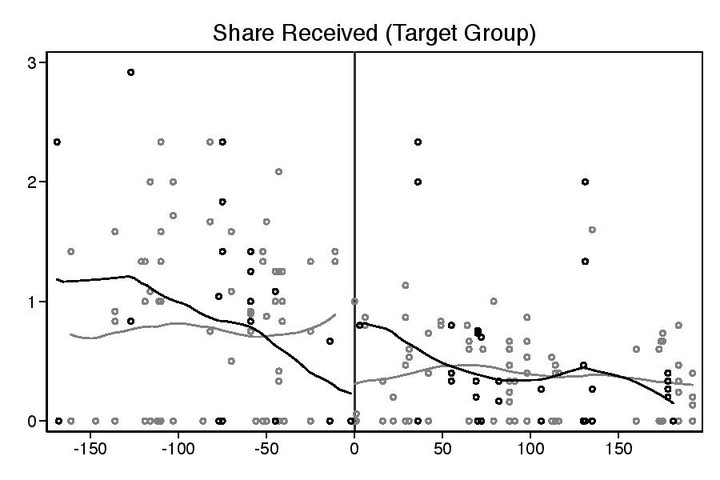Is Bigger Always Better? How Targeting Aid Windfalls Affects Capture and Social Cohesion
 Local polynomial regression showing the effect of targeting a bigger aid windfall on the share received by the target group in high threat (black line) versus lower threat (gray line) villages.
Local polynomial regression showing the effect of targeting a bigger aid windfall on the share received by the target group in high threat (black line) versus lower threat (gray line) villages.
Abstract
A central challenge in development involves ensuring that aid reaches those in greatest need. Aid agencies typically try to achieve this by targeting aid to vulnerable individuals or groups. Despite the prevalence of targeting, we know little about its effects on distributional outcomes and social cohesion in communities where some are intended to benefit and others are excluded. We investigate this by formalizing targeting as a bargaining game with coalition formation involving three players—the target group, the elite, and an excluded group. Our approach yields the counter-intuitive insight that the target group will actually benefit more in communities where elites and the excluded group compete to capture aid. We provide support for predictions using a regression discontinuity design and original survey data from an aid program implemented in Aceh, Indonesia. This article demonstrates the importance of understanding the role of community dynamics in shaping the economic and social outcomes of targeted aid programs.